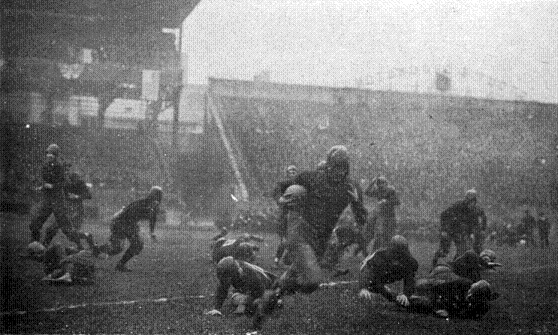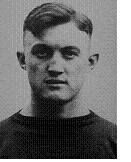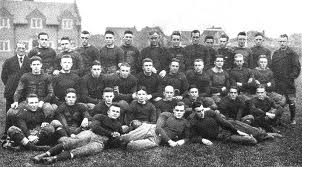
Pictured above is Pittsburgh hall of fame halfback Tom Davies running wild on Georgia Tech. This was the most anticipated game of the year, as neither team had lost since 1914, and Georgia Tech had been posting awe-inspiring scores for 2 years, and in fact they came into this game 5-0 by an average score of 85-0. But Pittsburgh dominated 32-0, decisively settling a debate that had not been settled in 1917.
The next week, Pitt lost 10-9 to Cleveland Naval Reserves, a military team composed of former college stars from around the country. Cleveland NR lost only to Chicago Naval Reserves, another military all-star team who finished 8-0. Pitt finished 4-1, but as Spalding's football guide put it at the time, they were "universally conceded to be the champion team of the country," and if there had been an AP poll in 1918, Pitt would have easily finished out as the highest ranked college team

 I summarized previous Pittsburgh teams in my national championship
articles for 1904, 1910, 1915, 1916,
and 1917,
and I covered their Hall of Fame coach, Pop Warner, in the 1915 piece.
Pitt lost 3 All Americans from their line heading into the 1918 season,
but they returned more veterans with which to build a team than did the
vast majority of college football teams, including 3 of their starting
4 backs
I summarized previous Pittsburgh teams in my national championship
articles for 1904, 1910, 1915, 1916,
and 1917,
and I covered their Hall of Fame coach, Pop Warner, in the 1915 piece.
Pitt lost 3 All Americans from their line heading into the 1918 season,
but they returned more veterans with which to build a team than did the
vast majority of college football teams, including 3 of their starting
4 backs This is Michigan's first real contender for an MNC since they went unbeaten 4 straight years 1901-1904,
and not coincidentally it is also the first time they posted a perfect
record since 1904. Their coach was still Hall of Famer Fielding Yost after all these
years, same guy I introduced in the 1901 article
This is Michigan's first real contender for an MNC since they went unbeaten 4 straight years 1901-1904,
and not coincidentally it is also the first time they posted a perfect
record since 1904. Their coach was still Hall of Famer Fielding Yost after all these
years, same guy I introduced in the 1901 article